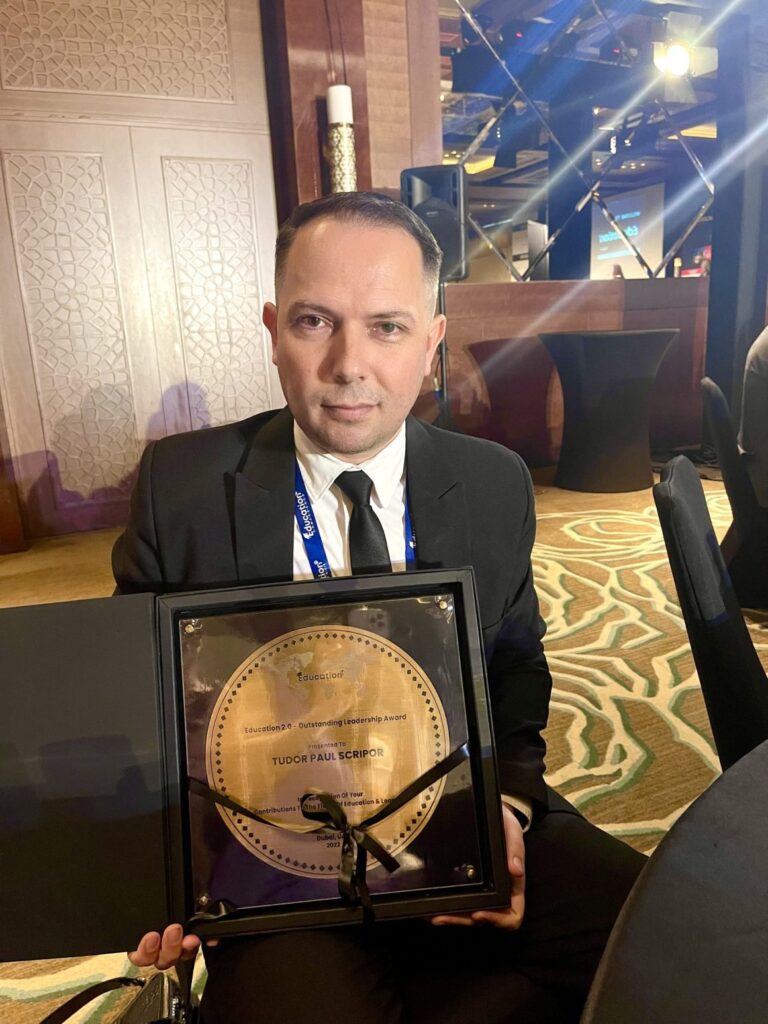He is the author of an invention that could revolutionize the way people with visual impairments perceive the world. He created a tactile alphabet that complements the Braille alphabet: the visually impaired can discern colors with the help of this alphabet, based on graphic representations.
He received a gold medal at the International Invention Salon in Geneva, Switzerland. The Cluj inventor has also signed a protocol with the Ministry of Education, through which the Romanian authorities will support the implementation of the Scripor alphabet in educational units for people with visual impairments. This alphabet involves a standardized tactile-graphic representation of colors, reducing words (whether in Braille, written or spoken in any language) to a single symbol, as an extension of the Braille alphabet. The Scripor alphabet, based on internationally recognized color theory, includes the three primary colors: red, yellow, blue, secondary colors: orange, green, purple, tertiary color brown, and the achromatic colors: white, black, and gray.
The inventor is a professional artist who has painted and taught art. “I studied at the High School of Fine Arts, which, ironically, or maybe not, was across from the school for the blind. Even back then in the ’90s, I observed that they did not dress in colorful clothes. That was my first observation,” says Tudor Scripor. He graduated from the iconography courses at the Greco-Catholic Theology Faculty of Babeș-Bolyai University and taught Byzantine art courses at the Beato Angelico Institute in Milan and at Arizona State University in the United States.
At one point, during a course in which he taught painting and restoration techniques, a blind student criticized him for not making him understand the term “color.” From that day on, he decided to do something to help the visually impaired see the world in color. “I thought that to explain a painting to a blind person, you had to make a volumetric description, which I did. I represented a painting by Grigorescu, and instead of wool, I used cotton, instead of sheep’s legs, I used matchsticks, and later I realized that volumetrics had nothing to do with the term color. I searched for color codifications for the blind and found nothing. They know that grass is green and the sky is blue, they write in Braille, and that’s it. I liked art and colors a lot, which is why I fought so hard to make this standardization happen,” says the inventor.
After years of study, research, and trial and error, Tudor Scripor managed to do the impossible, namely to create a color alphabet, a way for the blind and visually impaired to tactilely distinguish colors and differentiate them from each other. The alphabet of colors is intended for the blind and even the color-blind. Many color-blind people are interested in this alphabet because they cannot distinguish colors. Thanks to him, many games have become accessible to the blind. UNO is a game based on numbers and colors. Numbers and colors are universal symbols. Two blind people who know the rules of the game, even if they are from different countries,they can stillplay this accessible game. And the example continues with Rummy.
There are blind people who play sports. They cannot equip themselves. Tudor Scripor has implemented his invention in karate and other sports clubs. Belts have a small label, and you can find the color symbol below. The Scripor Alphabet will now be used globally, both in artistic creations and for highly practical purposes, such as making subway lines accessible for the visually impaired, which have different colors.
And thanks to Tudor Scripor, the Rubik’s Cube has become accessible to the visually impaired and easy to use. “My alphabet takes the form of a dot system that encodes colors in a simple and universal way. This code facilitates the equality of opportunities for all individuals with visual disabilities. Now these individuals have the ability to identify, write, read, recognize, and differentiate colors efficiently. Moreover, the Scripor alphabet is the pathway through which people with visual disabilities have access to everything around them. This concept will significantly improve their quality of life, provide them with a sense of belonging, and enhance their level of safety and autonomy.”

